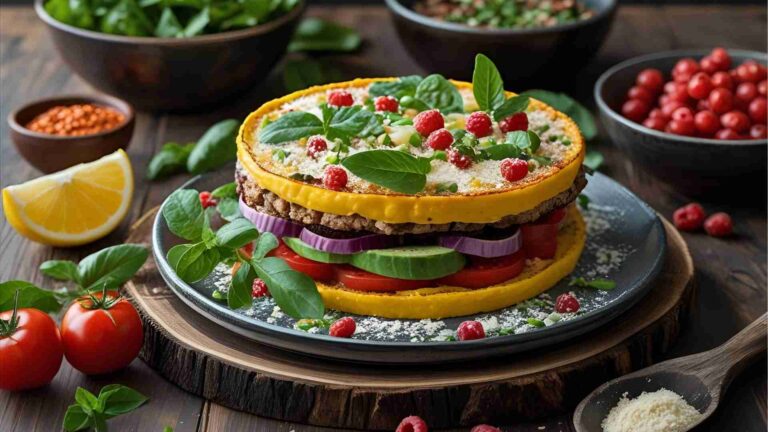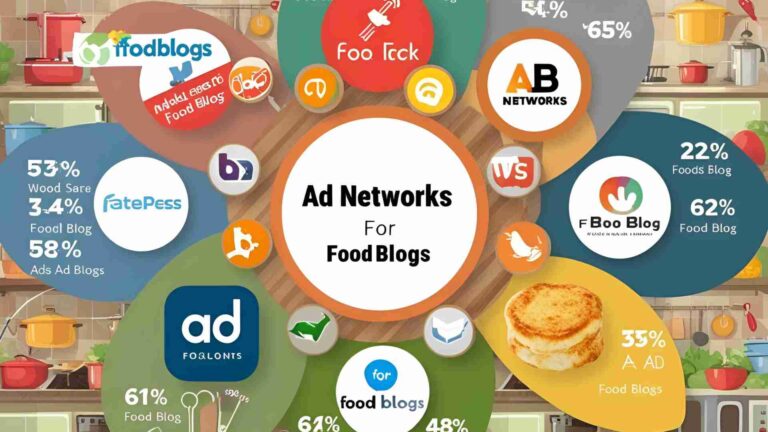Establishing a Niche as a Food Creator
Learn how to establish a niche as a food creator to stand out, attract the right audience, and grow a successful food blog with expert tips and strategies.
In the vast world of food blogging, where countless creators share recipes and culinary experiences, carving out a unique space is crucial for success. Establishing a niche as a food creator allows you to differentiate your brand, attract a dedicated audience, and build a sustainable platform. This comprehensive guide explores why a niche matters, how to choose one, and actionable steps to grow a successful food blog that resonates with readers and thrives in a competitive landscape.
Why a Niche Matters for Food Creators
A niche is a specialized segment within the broad food and recipe category that defines your content’s focus. It’s not just about narrowing your scope; it’s about creating a distinct identity that sets your blog apart. With thousands of food blogs vying for attention—estimated at over 30,000 based on industry growth since 2012—a niche helps you stand out. Here’s why it’s essential:
- Defines Your Brand Identity: A niche gives your blog a clear purpose. For example, instead of being a generic “food blog,” you could be known for vegan baking or 30-minute family meals, making your content instantly recognizable.
- Attracts the Right Audience: A well-defined niche connects you with readers who share your interests or needs. For instance, a blog focused on gluten-free recipes will resonate with those with dietary restrictions, fostering a sense of community.
- Establishes Expertise: Specializing allows you to become an authority in your field. Search engines like Google favor expert content, improving your visibility. Maurizio Leo’s The Perfect Loaf, a sourdough-focused blog, exemplifies this by offering recipes, guides, and tools tailored to its niche.
- Streamlines Content Creation: A niche provides a framework for brainstorming recipes and content, ensuring consistency and focus. Instead of creating random dishes, you’re crafting recipes that align with your brand, like keto desserts or Italian comfort food.
- Enhances Brand Partnerships: A clear niche makes it easier to collaborate with relevant brands. For example, a vegan blog can partner with companies producing plant-based products, creating authentic and lucrative sponsorships.
- Repels the Wrong Audience (and That’s Okay): A niche naturally filters out readers who don’t align with your focus. A carnivore diet blog, for instance, will deter vegans, ensuring your content reaches those most likely to engage.
However, food blogging comes with challenges. The revenue per 1,000 visitors (RPM) is often low compared to other niches, and competition is fierce, with established blogs and media giants dominating search rankings. Despite this, the potential for traffic is immense due to the vast array of food-related keywords, making a niche strategy even more critical.
How to Choose the Perfect Niche
Selecting a niche is a pivotal decision that requires introspection and research. Your niche should reflect your passion, expertise, and audience needs while ensuring longevity and market viability. Here’s a step-by-step guide to finding your niche:
Step 1: Reflect on Your Passion and Expertise
Your niche should align with what you love and know. Ask yourself:
- What am I passionate about? Can you see yourself creating content in this area for years?
- What experience do I have? Whether it’s baking, meal prepping, or a specific cuisine, leverage your skills.
- What unique perspective can I offer? Your background, cultural influences, or cooking philosophy can set you apart.
- Does this niche have longevity? Avoid fads, like blogs centered on trendy kitchen gadgets that may lose relevance.
- Does it serve a purpose? Your niche should address a specific audience need, like quick meals for busy parents or allergy-friendly recipes.
For example, if you’re an avid baker with a knack for gluten-free recipes, a gluten-free baking blog could be a perfect fit, combining your skills with a growing market demand.
Step 2: Research the Market
Analyze the competitive landscape to ensure your niche is viable but not oversaturated. Tools like Ahrefs or SEMrush can help identify keywords with decent search volume and low competition. For instance:
- A niche like “vegan desserts” may have high competition, but “vegan freezer desserts” could be less crowded, offering a unique angle.
- Check existing blogs in your potential niche. Can you bring something new, like a fresh cultural perspective or innovative techniques?
Step 3: Define Your Unique Angle
Your niche should go beyond broad categories like “healthy recipes.” Dig deeper to find what makes your content stand out. For example, within healthy recipes, you might focus on:
- Cooking Philosophy: Minimalist ingredients or farm-to-table ethos.
- Specific Methods: All Instant Pot recipes or sous-vide techniques.
- Audience Needs: Recipes for busy professionals or budget-conscious families.
Consider three levels of niche specificity:
- Top Level: Food (differentiates you from fashion or travel blogs).
- Second Level: Specific type, like baking or vegetarian recipes.
- Third Level: Unique angle, such as “15-minute vegetarian meals for college students.”
This three-tier approach ensures your niche is specific enough to stand out. For example, a blog about “easy healthy recipes” could be refined to “15-minute plant-based meals for busy moms,” instantly clarifying your focus.
Step 4: Test and Refine
If you’re unsure about your niche, start broad and narrow down based on what resonates with your audience. Monitor analytics to see which recipes perform best on search engines or social media. Alternatively, if you start with a niche and want to expand later, an established audience gives you flexibility to experiment.
Examples of Food Blog Niches
The possibilities for food blog niches are vast. Here are some popular categories with examples:
| Category | Niche Examples |
|---|---|
| Diet-Based | Vegan, Gluten-Free, Keto, Nut-Free, Diabetic-Friendly |
| Cuisine-Based | Italian, Mexican, Japanese, Indian, Thai |
| Technique-Based | Baking, Meal Prep, Slow Cooker, Sous-Vide |
| Lifestyle-Based | Budget Cooking, Family Meals, Seasonal, Travel |
| Activity-Based | Recipes for Runners, Yoga Enthusiasts |
| Meal-Based | Breakfast, Dinner, Desserts, Snacks, Beverages |
| Source-Based | Pantry Meals, Farmers Market, Trader Joe’s |
You can combine niches for a unique angle, like “vegan slow cooker meals” or “budget-friendly Italian dinners.” The key is to ensure your niche is specific enough to attract a dedicated audience but broad enough to generate ample content ideas.

This chart illustrates the diverse niches available, helping you visualize potential focus areas.
Steps to Build a Successful Food Blog
Once you’ve chosen your niche, turning it into a thriving blog requires strategy and execution. Here’s an eight-step roadmap:
Step 1: Hone Your Niche
Refine your niche using the three-step process outlined above Hypothetical Response:
above. Ensure it’s specific, sustainable, and aligned with your passion. For example, a “30-minute vegan meal” blog could target busy plant-based eaters, combining timeliness with dietary focus.
Step 2: Conduct Keyword Research
Use tools like Ahrefs or SEMrush to identify high-traffic, low-competition keywords relevant to your niche. For instance, “quick vegan dinner recipes” might have less competition than “vegan recipes.” Spend time researching to find long-tail keywords that align with your niche, such as “gluten-free dessert recipes for beginners.”
Step 3: Choose a Memorable Domain Name
Select a domain name that reflects your brand without limiting growth. Avoid overly specific names like “chickendishes.com”; instead, opt for something catchy or personal, like “SarasVeganKitchen.com” or “TastyBites.com.” Check availability on platforms like GoDaddy or Namecheap.
Step 4: Set Up Your Blog
- Hosting: Start with affordable hosting like Bluehost ($2.95–$13.95/month) or SiteGround ($3.99–$10.99/month). As traffic grows, consider premium options like Kinsta ($30–$100/month).
- Platform: Use WordPress.org for flexibility and control. It’s the industry standard for bloggers.
- Theme: Choose a clean, SEO-friendly theme from MyThemeShop ($59–$99) or StudioPress ($99–$129). Avoid overly complex designs that slow down your site.
- Logo: Create a simple logo using Canva (free–$119/year) or hire a designer on Fiverr ($5–$50).
Step 5: Publish High-Quality Content
Focus on original, niche-specific content. Key tips:
- Recipes: Develop unique recipes with clear instructions and high-quality photos.
- How-To Guides: Share techniques relevant to your niche, like “How to Bake Vegan Cakes.”
- Visuals: Use a DSLR or high-quality smartphone camera for vibrant food photos.
- Format Consistency: Maintain a uniform post structure for easy ad placement (e.g., ads after paragraph 4).
- Content Types: Include round-ups, gadget reviews, and nutrition tips if they fit your niche.
Step 6: Drive Traffic
Traffic is the lifeblood of monetization. Focus on:
- SEO: Optimize posts with keywords, meta descriptions, and alt text for images. Expect 6–12 months for significant Google traffic.
-
Social Media:
- Pinterest: Pin high-quality images of your dishes. Collages and recipe videos perform well.
- Instagram: Share photos and short recipe videos for brand exposure.
- YouTube: Post how-to or recipe videos for additional traffic.
- Facebook: Share unique recipe videos, as they get higher engagement.
- Email Newsletters: Offer a freebie (e.g., “10 Quick Vegan Recipes”) to build a subscriber list. Use platforms like Mailchimp (free–$20/month).
Step 7: Monetize Your Blog
Monetization options for food blogs include:
- Display Ads: Use AdSense ($0.50–$2 RPM) or premium networks like Mediavine or AdThrive (higher RPMs, require 25,000–50,000 monthly sessions).
- Affiliate Marketing: Promote kitchen gadgets or ingredients relevant to your niche (e.g., Amazon Associates, 1–10% commission).
- Recipe Books: Self-publish eBooks on Kindle or as PDFs ($5–$20/book).
- Sponsorships: Partner with brands aligned with your niche, like vegan product companies.
- Courses: Offer niche-specific courses, like “Mastering Sourdough Baking” ($50–$200).
Step 8: Stay Consistent
Success requires persistence. Publish regularly (1–2 posts/week) and engage with your audience on social media. Video content can accelerate growth, but it’s not mandatory. Passion and consistency will build your audience over time.
Monetization Potential
| Method | Potential Earnings | Requirements |
|---|---|---|
| Display Ads | $500–$5,000/month | High traffic (50,000+ sessions) |
| Affiliate Marketing | $100–$1,000/month | Niche-relevant products |
| Recipe eBooks | $500–$2,000/month | Established audience |
| Sponsorships | $200–$5,000/deal | Brand alignment, engaged audience |
| Courses | $1,000–$10,000/month | Expertise, course platform (e.g., Teachable, $29–$499/month) |
Note: Earnings vary based on traffic, niche, and effort. Top food bloggers like those earning $40,000+/month often combine multiple streams.
Pros and Cons of Food Blogging
| Pros | Cons |
|---|---|
| High traffic potential due to diverse keywords | Low RPM ($0.50–$5 vs. $10–$50 in other niches) |
| Fun if you love food | Intense competition from established blogs |
| Multiple monetization options | High effort for recipe development/photos |
| Opportunity for book/TV deals | Slow initial traffic growth (6–12 months) |
Tips for Long-Term Success
- Invest in Photography: High-quality images are critical for food blogs. A DSLR ($500–$1,500) or a good smartphone ($300–$1,000) with editing apps like Lightroom ($9.99/month) can suffice.
- Engage Your Audience: Respond to comments and emails to build community. Share reader stories on social media.
- Stay Authentic: Let your personality shine through your recipes and writing to create a unique voice.
- Monitor Analytics: Use Google Analytics (free) to track which posts drive traffic and refine your strategy.
- Avoid Burnout: Plan a sustainable content schedule. Outsource tasks like photo editing ($5–$20/hour on Fiverr) if needed.
Case Studies of Successful Food Blog Niches
- The Perfect Loaf: Focuses on sourdough, offering recipes, guides, and tools. Maurizio Leo’s expertise has made it a go-to resource, leading to podcast features and brand deals.
- Smitten Kitchen: Deb Perelman’s approachable recipes and storytelling led to a cookbook deal, showing the power of a personal brand.
- Pinch of Yum: Combines budget-friendly recipes with stunning photography, earning significant ad revenue through Mediavine.
Common Mistakes to Avoid
- Choosing a Too-Broad Niche: “Food” is too generic. Narrow it down to something like “quick keto meals.”
- Ignoring SEO: Without optimization, your posts may not rank, delaying traffic growth.
- Overcomplicating Design: Fancy themes can slow your site. Stick to simple, fast-loading designs.
- Neglecting Social Media: Platforms like Pinterest and Instagram are key for food blog traffic.
- Giving Up Too Soon: Traffic takes time. Consistency is key to long-term success.
Conclusion
Establishing a niche as a food creator is the foundation of a successful food blog. By choosing a specific, passion-driven niche, conducting thorough keyword research, and following a strategic plan, you can build a blog that attracts a loyal audience and generates revenue. Whether you focus on vegan baking, budget meals, or sous-vide techniques, your niche will define your brand, streamline your content, and set you apart in a crowded market. With persistence, high-quality content, and smart monetization, your food blog can become a thriving platform that resonates with readers worldwide.
Please share these Establishing a Niche as a Food Creator with your friends and do a comment below about your feedback.
We will meet you on next article.
Until you can read, Quick Tip for new bloggers: Block yourself from Analytics!






